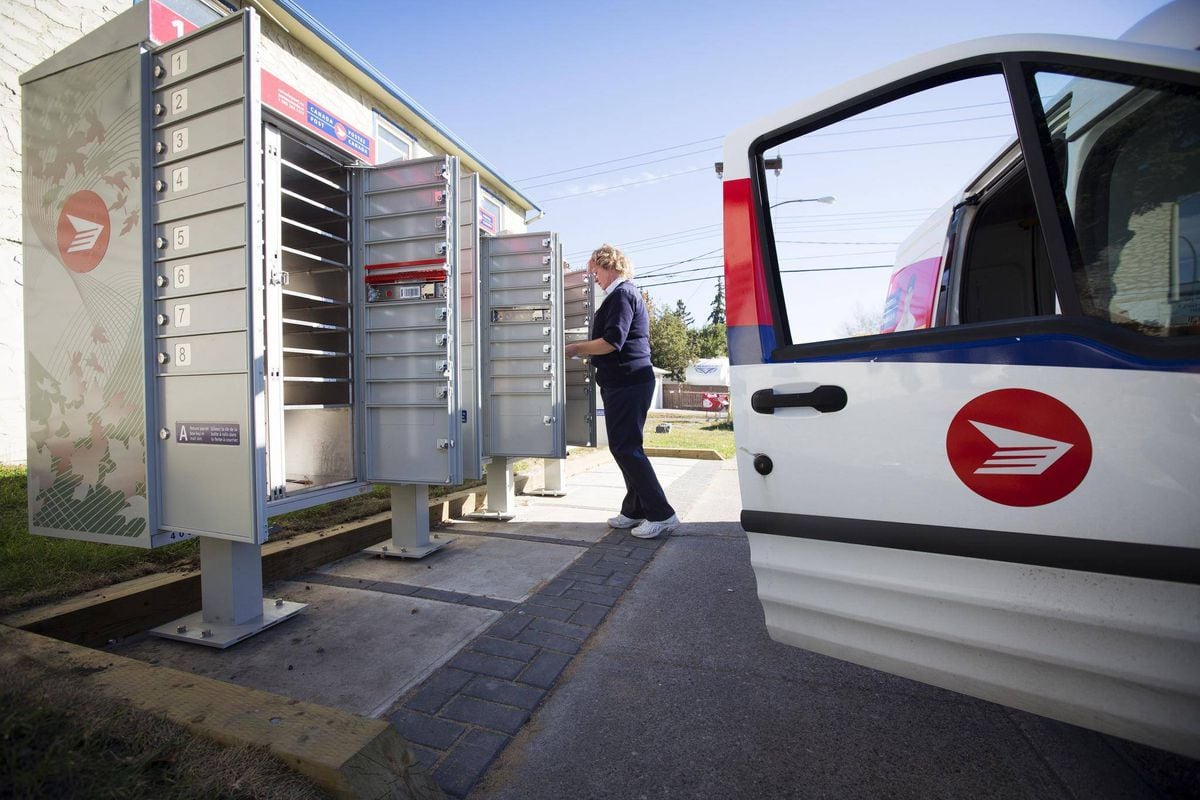Report Recommends Changes To Canada Post's Daily Home Mail Service

Table of Contents
Key Findings of the Report on Canada Post Home Mail Delivery
The CFIB report highlights several critical issues undermining the current Canada Post home mail service model. These findings underscore the need for significant reform to ensure the long-term viability of the system.
-
Rising Operational Costs: Maintaining daily home delivery is increasingly expensive. Fuel costs, especially with fluctuating global prices, represent a significant burden. Furthermore, labor costs, including wages and benefits for postal workers, are steadily increasing. Finally, the upkeep and maintenance of Canada Post's extensive infrastructure, from sorting facilities to delivery vehicles, adds to the financial strain.
-
Decreasing Mail Volume: The digital revolution has significantly impacted mail volume. The rise of email for personal and business communication, online bill pay systems, and e-commerce's reliance on digital receipts has led to a dramatic decrease in physical mail. This reduced demand directly impacts the efficiency and profitability of daily home delivery.
-
Environmental Concerns: The current Canada Post home mail service model has a significant environmental footprint. The sheer number of delivery vehicles on the road contributes to increased fuel consumption and greenhouse gas emissions. This impacts air quality and contributes to climate change, making it a crucial factor in considering systemic changes.
-
Inefficient Delivery Routes: The report identifies inefficiencies in current delivery routes, suggesting opportunities for optimization. Consolidating routes, utilizing more efficient delivery methods, and leveraging technology to streamline delivery processes could significantly reduce costs and environmental impact.
Proposed Changes to Canada Post's Home Mail Service
The report proposes several key changes to address the issues identified. These recommendations aim to create a more sustainable and efficient Canada Post home mail service for the future.
-
Less Frequent Home Delivery: The report suggests transitioning to a less frequent home delivery schedule, such as every other day or alternate days, potentially varying by region based on population density and mail volume. This would significantly reduce operational costs and environmental impact.
-
Increased Reliance on Community Mailboxes: Expanding the use of community mailboxes and centralized delivery points is another key recommendation. While this may require initial investment and adjustments for some users, it offers substantial cost savings and improved efficiency by reducing individual home deliveries.
-
Investment in New Technologies: The report advocates for significant investments in new technologies to improve efficiency. This includes route optimization software to plan the most efficient delivery routes, automated sorting systems to speed up processing, and a gradual transition to electric delivery vehicles to reduce emissions.
-
Alternative Delivery Partnerships: Exploring partnerships with private courier services or local businesses for certain types of deliveries could provide additional flexibility and efficiency, potentially reducing the burden on Canada Post’s existing infrastructure.
Potential Impacts on Consumers and Businesses
The proposed changes will undoubtedly have implications for both consumers and businesses. Understanding these potential impacts is crucial for a successful transition.
-
Impact on Time-Sensitive Mail: A less frequent mail delivery schedule could impact the timely delivery of important documents like bills, prescriptions, and other time-sensitive mail. Addressing this concern will require clear communication and alternative solutions.
-
Increased Digital Reliance: The changes could accelerate the shift towards online banking and digital communication for bill payments. However, this raises concerns about digital literacy and equitable access to the internet for all Canadians.
-
Impact on Businesses: Businesses that rely on daily mail delivery, particularly small businesses, may face challenges. Marketing materials, invoices, and other critical documents may experience delivery delays, impacting their operations.
-
Public Opinion and Resistance: Any change to a well-established service like Canada Post home mail service is likely to meet with public resistance. Open communication, transparency, and addressing public concerns will be essential for a successful transition.
Conclusion
The report's recommendations for changes to Canada Post's daily home mail service represent a critical step towards ensuring the long-term viability of the system. While the proposed changes will undoubtedly present challenges and require careful management, the potential long-term benefits in terms of cost efficiency, environmental sustainability, and improved service through technological advancements are significant. Open and transparent communication with the public is vital to ensure a smooth transition and address potential concerns about the future of Canada Post home mail service. To stay informed about upcoming changes and how they will impact your mail delivery, regularly check for official announcements from Canada Post.

Featured Posts
-
 Een Praktische Gids Voor Tikkie Betalingen In Nederland
May 21, 2025
Een Praktische Gids Voor Tikkie Betalingen In Nederland
May 21, 2025 -
 Big Bear Ai Holdings Bbai Stock Plunge In 2025 Reasons And Analysis
May 21, 2025
Big Bear Ai Holdings Bbai Stock Plunge In 2025 Reasons And Analysis
May 21, 2025 -
 Abn Group Victoria Appoints Half Dome As Its Media Agency
May 21, 2025
Abn Group Victoria Appoints Half Dome As Its Media Agency
May 21, 2025 -
 Sejarah Kemenangan Liverpool Di Liga Inggris Peran Para Pelatihnya
May 21, 2025
Sejarah Kemenangan Liverpool Di Liga Inggris Peran Para Pelatihnya
May 21, 2025 -
 College De Clisson Le Port De La Croix Catholique Questionne
May 21, 2025
College De Clisson Le Port De La Croix Catholique Questionne
May 21, 2025
